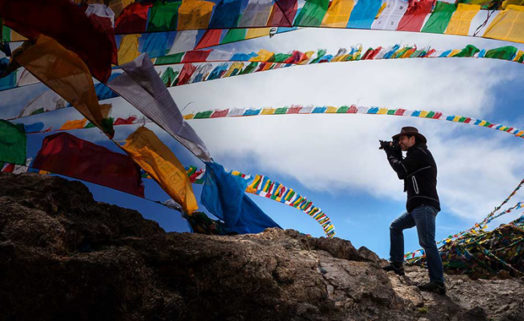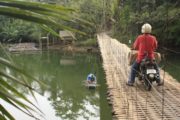Diving with whale sharks in the Philippines

Donsol is considered the best place to spot whale sharks in the Philippines, but only snorkeling is allowed. So Ian heads to Oslob, Cebu, where scuba diving is permitted, and he sees not one, but two whale sharks.
Scuba diving with whale sharks is a luxury many divers don’t get to experience. Lucky divers usually only get to glimpse these gentle spotted sea giants when one silently wisps by them on a dive. Fortunately, scuba diving with whale sharks in the Philippines is a unique opportunity that has developed off the coast of several island locations.
You’d think it would be easy to spot the largest fish in the sea but these ocean creatures are a newer addition in human history. The most famous location for swimming with these ocean creatures is in Donsol, where whale shark spotting and snorkeling is extremely popular.
The best month to see whale sharks in the Philippines is in February, and it being at the top of my list of things to do an see, I was disappointed that visiting Donsol wasn’t in the cards for my most recent visit to the country.
Imagine my surprise, when I arrived in Dumaguete, to learn that whale sharks were one of the newest dive attractions in the area. Just 45min away in the shallows of Oslob, Cebu a group of 6 whale sharks had recently been discovered.
Although most would consider this a once in a lifetime opportunity, snorkeling and scuba diving with the whale sharks in this area is not without controversy. Little is known about the whale shark and, although special precautions have been taken by the fishing community and government in the area to ensure the sharks safety and protection, activists are not convinced that enough is known about the creatures to allow for these activities.
On one side of the debate, snorkeling and scuba diving with the whale sharks prevents them from being fished off the Filipino coast to be used in shark fin soup, one fin often fetching tens of thousands of dollars. However, there is a lot of controversy surrounding the way in which the sharks are being attracted to the area.
Tourists who wish to swim with the sharks are required to pay a sanctuary fee in order to protect the fish, but more so to subsidize the cost of the fisherman who are feeding the whale sharks in order to keep them in the area. Currently, not enough is known about how these human interactions will affect the whale sharks in this area and some speculate that it could have negative effects.
The debate is multi-tiered. On the one hand you have new economic stimulus in the form of tourism helping the impoverished fisherman who make less than a dollar a day. It also helps protect the sharks from being fished.
On the other hand, there are a lot of unknowns related to how feeding and scuba diving will affect this whale shark community. Tourists are often not told how to behave around the sharks and unknowingly touch the creatures which destroys the mucous membrane on the fish’s skin, and the effects of feeding them is unknown.
Regardless of which side of the debate you take, the opportunity to scuba dive with whale sharks is something that’s difficult to pass up. In most places that have established whale shark tourism, tourists are only permitted to snorkel with them.
Although there is no location-specific research that supports the theory that scuba diving negatively affects whale sharks, only snorkeling is permitted in Donsol. Luckily for me and other scuba diving enthusiasts that can make it to Oslob, this is the only place where you can scuba dive with the whale sharks, and what an awe-inspiring experience it is.
Whale sharks can reach up to several meters in length. For the month of February 2012, there were several sharks to spot, most of which were between 5 to 8 meters in length. Scuba diving with whale sharks allows divers a unique experience to observe these creatures in a dynamic ocean environment.
My dive buddy Mikkel, a Danish friend I met in Dumaguete, decided we wanted to scuba dive and take a few pictures with the whale sharks. When I told Mikkel I wasn’t sure if I wanted to dive or snorkel, he replied, “diving is always better.” So we opted out of the snorkeling and, armed with an underwater camera and two air tanks loaded with 2000psi of air, the two of us descended into the murky waters for our glimpse of these rare creatures.
The current was strong and we had to fight our way to the location where the fishermen were entertaining the sharks. As we swam, our guide pointed up and we spotted our first giant. Feeling like we were a little too far away, the two of us decided to ascend from our position 20 meters under so we could get a closer look.
As I ascended while looking for Mikkel with the camera, I suddenly found myself floating between two massive whale sharks. There was only a meter between myself and the two sharks on either side, and I could see them perfectly.
I watched in awe as they effortlessly cruised against the ocean current. Remembering the episode of BBC’s planet earth, I observed some of the whale sharks characteristics, spotting the life that lives off the fish. It was magnificent being so close to these creatures in the wild, and I spent my entire time diving alongside them.

Scuba diving was the right choice. I was able to view the whale sharks from a variety of view points.
In the end it was an experience not to be forgotten. We snapped a few photos, swam with the sharks, and spent what seemed hours mesmerized by the gentle movements of these rare and mysterious ocean creatures.
No one knows if they will be back next year, or what will come of this small whale shark community. All I know is that scuba diving with whale sharks in the Philippines was the best part of my visit, and although their future is uncertain, I hope these magnificent creatures will survive.












